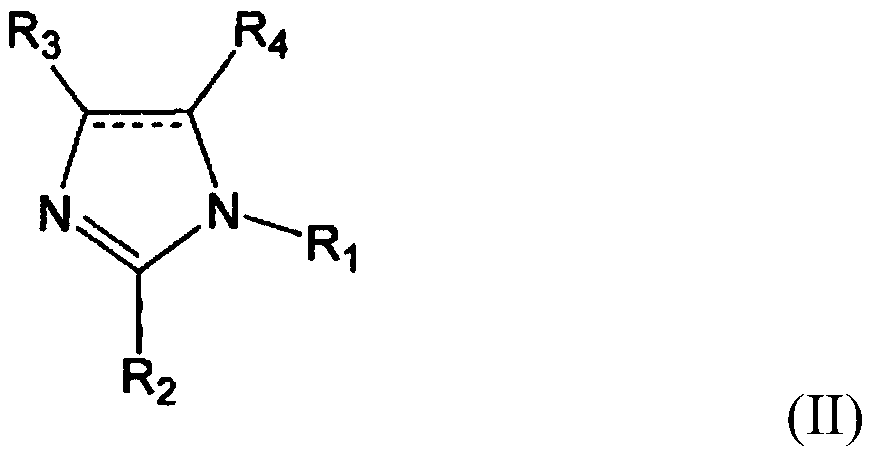A curative composition and a resin composition containing the curative composition
A composition and compound technology, which is applied in the field of latent curing agent compositions, can solve the problems of inability to use single-component epoxy resin compositions, hindering high-volume application of composite matrix preparations, and expensive curing clathrates.
- Summary
- Abstract
- Description
- Claims
- Application Information
AI Technical Summary
Problems solved by technology
Method used
Image
Examples
Embodiment
[0186] Embodiments of the invention are described below, by way of example only, with reference to the following examples.
[0187] The following constituent components were used to prepare the compositions of the examples.
[0188]
[0189]
[0190] The following methods were used to measure various parameters of the cured resin:
[0191] Dynamic Differential Scanning Calorimetry (DSC) was performed using a TA Q100 instrument to determine the uncured glass transition temperature (Tg) according to ASTM D7028, cure onset temperature T c , and reactivity and residual cure obtained from -50 to 350°C using a heating rate of 10°C / min.
[0192] Isothermal Differential Scanning Calorimetry (DSC) was performed using a DSC 1 from a Mettler Toledo instrument to determine the time to 95% cure at various temperatures and cure regimes.
[0193] Dynamic Mechanical Analysis (DMA) was performed on the cured resin using a Q800 instrument at a heating rate of 5°C / min and a frequency of ...
Embodiment 1-B
[0201] Example 1 - BHPVA-2E4MZ
[0202] 10.0 g of 4,4'-bis(4'-hydroxyphenyl)valeric acid were stirred in 150 ml of refluxing acetone. A solution of 3.85 g of 2-ethyl-4-methylimidazole in 15 ml of acetone was added dropwise to the solution. The mixture was refluxed for 3 hours, then allowed to cool to room temperature. The resulting precipitate was collected by filtration and allowed to dry in a vacuum oven at room temperature overnight to yield 12.3 g of a white powder. The ratio of host to guest in the precipitated clathrate is determined by 1 H NMR showed about 1:1, which equates to 27.8 wt% imidazole.
Embodiment 2-B
[0203] Example 2 - BHPVA-2MZ
[0204] BHPVA-2MZ was prepared using the procedure in Example 1 with 10.0 g of 4,4'-bis(4'-hydroxyphenyl)valeric acid and 2.9 g of 2-methylimidazole to give 12.9 g of a white powder. The ratio of host to guest in the precipitated clathrate is determined by 1 H NMR showed about 1:1, which equates to 22.3 wt% imidazole.
PUM
 Login to View More
Login to View More Abstract
Description
Claims
Application Information
 Login to View More
Login to View More - R&D
- Intellectual Property
- Life Sciences
- Materials
- Tech Scout
- Unparalleled Data Quality
- Higher Quality Content
- 60% Fewer Hallucinations
Browse by: Latest US Patents, China's latest patents, Technical Efficacy Thesaurus, Application Domain, Technology Topic, Popular Technical Reports.
© 2025 PatSnap. All rights reserved.Legal|Privacy policy|Modern Slavery Act Transparency Statement|Sitemap|About US| Contact US: help@patsnap.com



